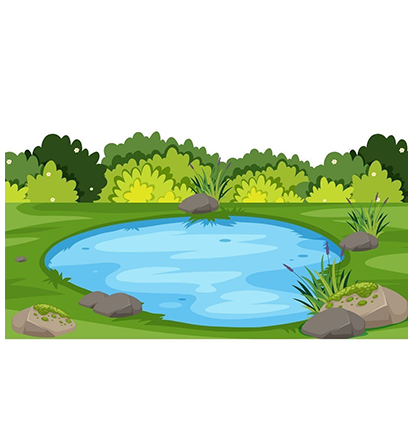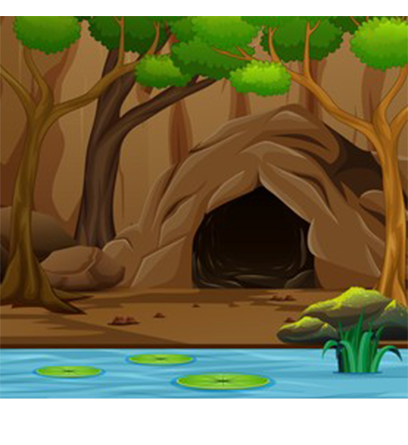EVS Worksheet : Animal's Habitats For Class 1 Kids.
Introduction:
A habitat is the place or environment where a plant or animal naturally lives and grows . It includes water, air, trees, rain, snow, and sand. A combination of many things that including temperature, soil, available food, rainfall, and geographic location , create a habitat. Animals live in different kinds of habitats, and they’re adapted for that particular habitat. For instance, a polar bear is adapted for living in the freezing arctic conditions, whereas a shark has evolved to live in an aquatic habitat. A polar bear would certainly die in the heat if taken out of its natural habitat. A shark has gills that allow it to breathe in water but would die if removed out of water.
Homes of animals meet the need of protecting them from cold, heat, rain, and attack of their enemies.
The basic need for living objects is shelter, and we name it home.
All animals and plants need a place to live. Habitats are places in nature that provide food, protection from predators and unfavourable weather, and give a home in which to raise their young ones.
Habitats are characterised most often by its climate and the location. They can range from warm, moist areas near the Equator to cold polar areas such as the Arctic. There are different names for homes of various animals listed below.
Types of Animal Habitats
There are many different types of animal habitat. Here are some of the most common ones.
Our homes – Domesticated animals are ones that live with humans. The most common animals that live in houses are dogs and cats. Some animals that live with humans are too big and too messy to live in a house.
Barns – Animals like horses, cows, sheep, and pigs can be pets, but they usually live in barns.
Webs – Spiders spin webs to live . Webs are also perfect traps for catching insects for spiders to find its prey.
Hives – Bees, wasps, and yellow jackets make wax inside their bodies, then they use this wax to build homes called hives. These insects like to live together in a cluster of huge numbers. A hive makes a good home for the whole colony.Caves – Animals like ions, tigers, bears, wolves, and bats make their homes into caves. Caves are not just found on land but also Many animals that live in the water, especially eels, like to live in underwater caves.
Burrows and Holes – Many animals dig into the earth’s surface to make their homes. Foxes, rabbits, and ants all live underground. Some underground homes are very simple with just one large hole inside and a single exit while others are quite complex with many rooms, compartments, entrances, and exits.
Shells – Many animals with soft bodies actually carry their homes with them. These homes are called shells and the hard exterior of the shells help to protect the animals inside. Most animals such as snails, and turtles have ‘built on’ shells.
Nests – Birds make nests to live and to lay their eggs in. Nests can be built in the branches of a tree or on the ground, and some city birds build their nests in the nooks and crannies of buildings.
Hollow Logs – Animals that live in the woods, such as mink, foxes, otters, skunks, and weasels often like to make their homes in hollow logs.
Tree Hollows – Squirrels, owls, porcupines, and raccoons all like to make their homes in the hollow of a tree. Even black bears like to live in tree hollows.
Instructions to solve the worksheet
Given below are the names of some animals based on your understanding identify them and write their names in the corresponding blanks
Importance of Environmental Education
- EVS helps children to develop their own insights into the functioning of several things or understanding human processes in their environment. Such interactions with their surrounding environment are immensely important for the healthy development of children.
- Not only does environmental education offer opportunities for experiential learning outside of the classroom, it enables students to make connections and apply their learning in the real world.
- EVS helps learners see the interconnectedness of social, ecological, economic, cultural, and political issues.
- By providing environmental education to students they will engage problem-solving techniques of the outer world to their subjects to understand a particular problem by implying outdoor environmental solutions.
- Environmental Education gives students a new meaning of exploring mother nature to see and resolve the issues which are harmful to the environment and this will also help them in maintaining their own health by doing physical work so that their bodies will be immune from some serious health issues such as short-sightedness, obesity and in some cases even lack concentration.
- The one major issues which we need to deal with is pollution and if we don’t educate our kids about the hazardous effects of environmental damage there will be no future of the world.


























































